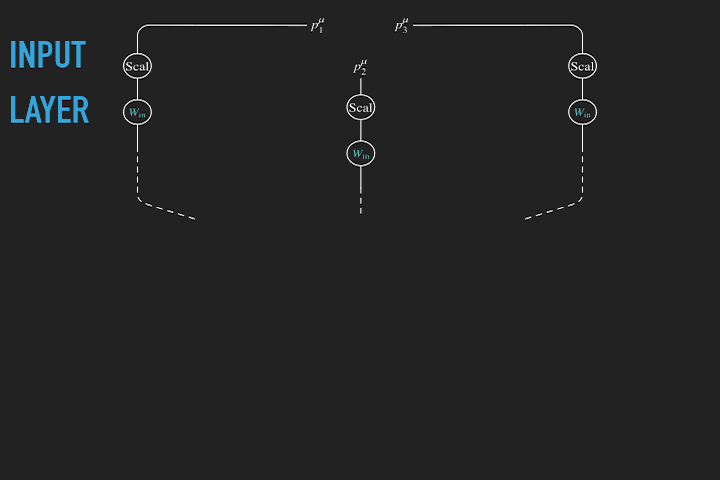Machine Learning for Particle Physics

Machine Learning for Particle Physics
Particle Physics has benefitted from, and in many ways strengthened and advanced, progress in AI/ML for decades due to its proliferation of enormous data sets, complex instrumentation, and computing infrastructure. Our group is engaged in efforts to target important problems relevant to the use of of machine learning, symmetries, and domain knowledge in particle physics.
Approach
- Symmetry-aware neural network architectures: We have developed a novel a neural network architecture that is fully equivariant with respect to transformations under the Lorentz group, a fundamental symmetry of space and time in physics. The architecture is based on the theory of the finite-dimensional representations of the Lorentz group and the equivariant nonlinearity involves the tensor product. For classification tasks in particle physics, we demonstrate that such an equivariant architecture leads to drastically simpler models that have relatively few learnable parameters and are much more physically interpretable than leading approaches that use CNNs and point cloud approaches. The competitive performance of the network is demonstrated on a public classification dataset for tagging top quark decays given energy-momenta of jet constituents produced in proton-proton collisions.
- Calorimeter energy reconstruction and particle identification: Our group has gotten involved in an ongoing effort to improve the energy reconstruction and identification of calorimeter deposits using machine learning approaches.
- Self-driving trigger concept: we have introduced a new data-driven approach for designing and optimizing high-throughput data filtering and trigger systems such as those in use at physics facilities like the Large Hadron Collider (LHC). Concretely, our goal is to design a data-driven filtering system with a minimal run-time cost for determining which data event to keep, while preserving (and potentially improving upon) the distribution of the output as generated by the hand-designed trigger system.